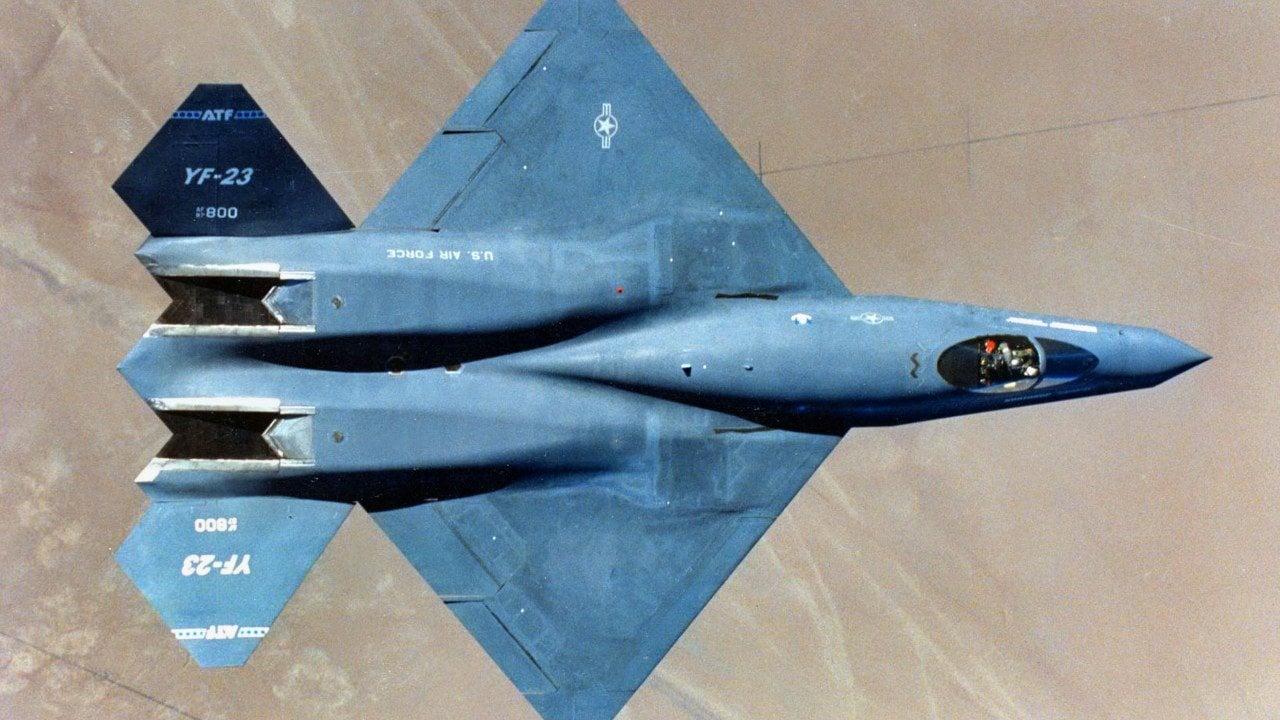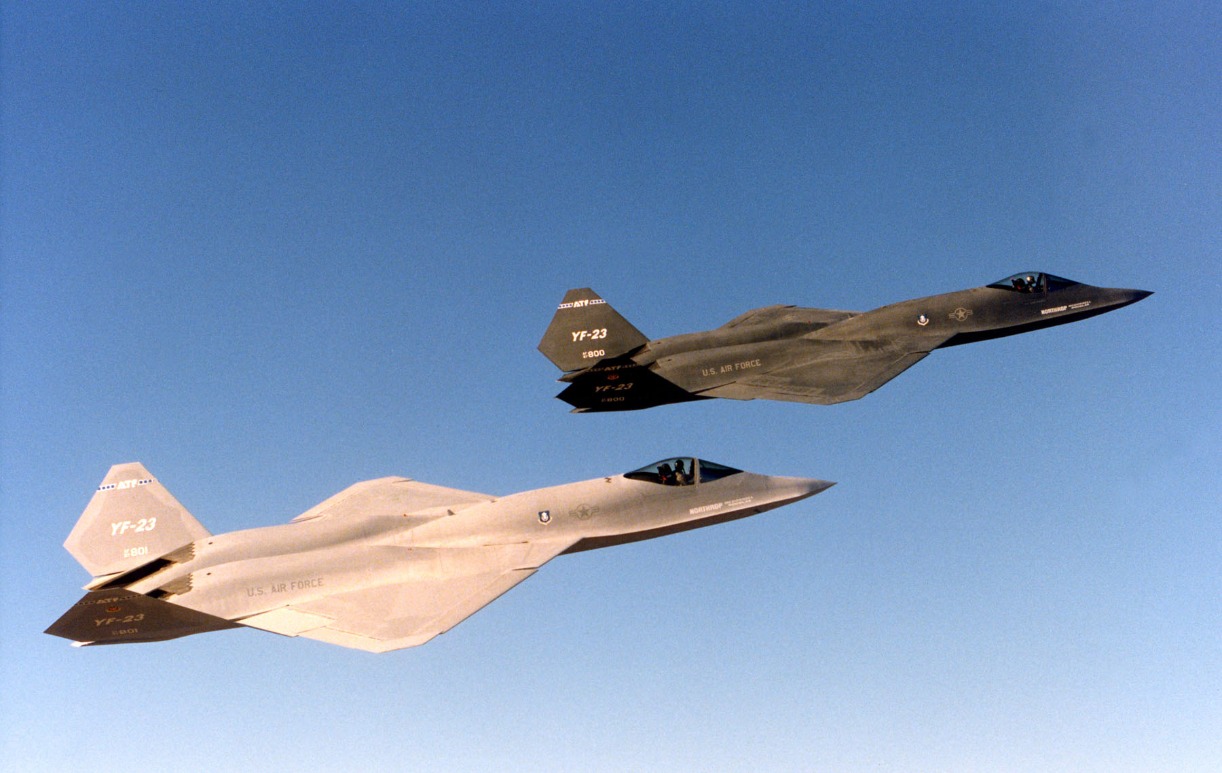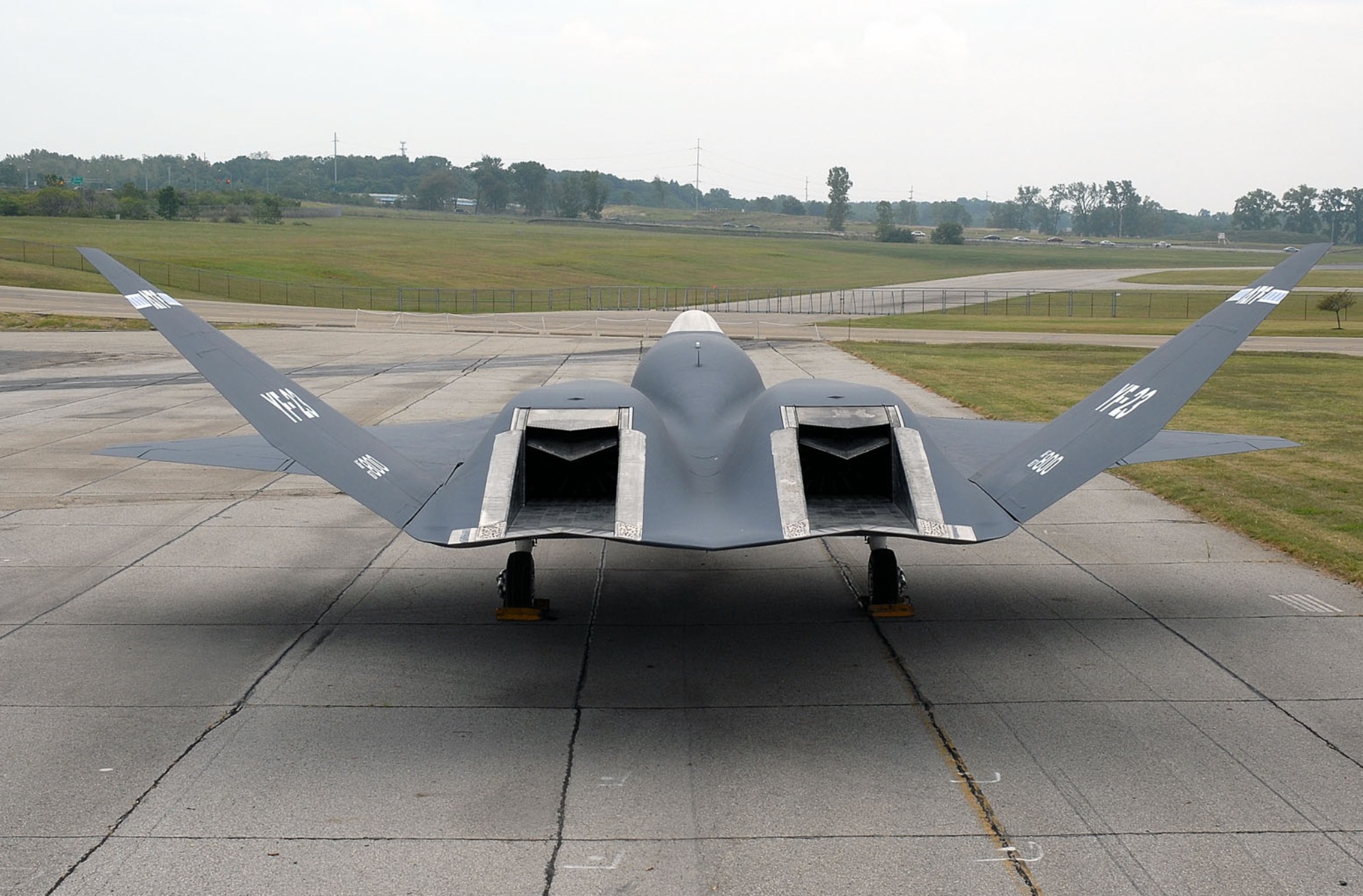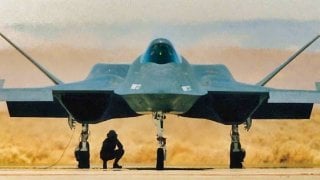YF-23 Black Widow: The Stealth Fighter That Almost Replaced the F-22 Raptor
The Northrop YF-23, nicknamed "Black Widow II," was a stealth fighter prototype developed in the late 1980s and early 1990s as part of the U.S. Air Force's Advanced Tactical Fighter (ATF) program.
What You Need to Know: The Northrop YF-23, nicknamed "Black Widow II," was a stealth fighter prototype developed in the late 1980s and early 1990s as part of the U.S. Air Force's Advanced Tactical Fighter (ATF) program.

-Competing against Lockheed Martin's YF-22, which became the F-22 Raptor, the YF-23 showcased superior supersonic cruise performance, better stealth capabilities, and advanced YF120 variable-cycle engines. Despite these advantages, it lost the contract due to the YF-22's better agility, thrust vectoring, and Lockheed Martin's effective marketing.
-Only two YF-23 prototypes were built; both are now displayed in U.S. museums, preserving the legacy of what might have been a game-changing aircraft.
YF-23 Black Widow Advanced Tactical Fighter: What Might’ve Been
To the current generation of U.S. Air Force (USAF) fighter pilots, the Lockheed Martin F-22 Raptor fifth-generation stealth fighter probably feels like it’s been around forever, and therefore its existence in the USAF jet fighter arsenal may seem like it was a foregone conclusion.
However, those of us here who are Generation X or older may remember that back in the late 1980s and early 1990s, there was a competing design from Northrop, now Northrop Grumman, that gave the then-YF-22 a run for its money in the bid for the USAF’s Advanced Tactical Fighter (ATF) contract.
Say hello to the Northrop YF-23, unofficially nicknamed the “Black Widow II.”
Northrup YF-23 ATF Manta Early History & Specifications
The YF-23 made her maiden flight on August 27, 1990. The ATF program, meanwhile, traced its roots back to 1981, wherein the program’s brain trust conceptualized an air superiority fighter that would succeed the then-McDonnell Douglas, now Boeing F-15 Eagle, and thus put the Air Force in a more advantageous position to counter the emerging threats of the Soviet Union's then-newfangled Mikoyan MiG-29 "Fulcrum" and Sukhoi Su-27 "Flanker" fourth Generation fighters.

History would show that the Eagle could handle the Fulcrum just fine in actual air-to-air combat.. By 1986, the Air Force had narrowed the list of ATF hopefuls down to two candidates: Lockheed by teaming up with Boeing, and General Dynamics forming the YF-22 and Northrop tag-teaming with McDonnell Douglas, with the YF-23.
The YF-23 had the following specifications and vital stats:
Fuselage Length: 67 ft 5 in (20.55 m)
Wingspan: 43 ft 7 in (13.28 m)
Height: 13 ft 11 in (4.24 m)
Empty Weight: 32,000 lb (14,515 kg)
Gross Weight: 64,000 lb (29,030 kg) takeoff, 51,320 lb (23,280 kg) combat weight
Powerplant: 2 × General Electric YF120 afterburning turbofan engines, 23,500 lbs (105 kN) thrust each dry, 30,000 or 35,000 lbs (130 or 160 kN) with afterburner
Max Airspeed: Mach 2.2 (1,450 mph, 2,335 km/h) at high altitude
Combat Range: 651–695 nmi (750–800 mi, 1,210–1,290 km)
Service Ceiling: 65,000 ft (20,000 m)
g-Limits: +7.1
As for armament, the aspiring stealth warbird was never actually tested with ordnance but was provisioned for the following:
one 20 mm (0.79 in) M61 Vulcan automatic rotary cannon
four AIM-120 AMRAAM (Advanced Medium Range Air-to-Air Missile; nicknamed the “Slammer”) active-radar guided missiles or AIM-7 Sparrow medium-range semi-active radar-guided air-to-air missiles.
two AIM-9 Sidewinder short-range infrared (IR, also-known-as heat-seeking air-to-air missiles)
A total of two YF-23 prototypes were built. Ditto for the YF-22 prototypes.

Operational Performance…And What Went Wrong
The YF-23 was given that unofficial “Black Widow” moniker for two reasons:
1. in homage to the WWII-era P-61 Black Widow night fighter.
2. the first of the two prototypes briefly had a red hourglass painted on its Ram air scoop to prevent injury to the ground crew, which resembled the telltale marking on the underside of the venomous black widow spider.
As for the head-to-head competition between the “Black Widow II” and the eventual “Raptor” dynamic duos, the former was the better performer in multiple respects, according to several subject matter experts. These advantages included better supersonic cruise performance, better stealth, and only slightly less maneuverability than the YF-22 at extremely low airspeeds. Moreover, the YF-23 also goaded a superior raw performance from its then-state-of-the-art General Electric (G.E.) variable-cycle YF120 engine.
So then, how and why did the YF-23 lose the bid to the YF-22? Well, to be fair & balanced, the Lockheed Warbird did have the advantages of better agility and thrust vectoring. Moreover, as my colleague Stavros Atlamazoglou points out, “But Lockheed Martin did a much better job marketing the aircraft, highlighting its high-g capabilities and maneuverability.”
As a quick personal side note, I first learned of the YF-23 at the age of fifteen via one of my boyhood heroes, USAF Brig. Gen. Chuck Yeager (the first man to break the sound barrier) appeared in a series of TV adverts advocating on behalf of the YF-23. Back then, I thought that if an icon of General Yeager's iconic status and influence was plugging the YF-23, it would be a surefire bet to win the ATF contract.
But it was not meant to be. In fact, before this, Chuck Yeager had stated in his bestselling 1986 autobiography that he had considered another Northrop product, the F-20 Tigershark, to be the best-made fighter of the time, yet that project also ultimately faltered.
Where Are They Now?
Luckily, for the sake of posterity, both airframes have been preserved as museum displays. YF-23A PAV-1, Air Force Serial No. 87-0800, nicknamed "Gray Ghost", registration number N231YF, is on display at the National Museum of the United States Air Force at Wright-Patterson AFB in the vicinity of Dayton, Ohio, whilst YF-23A PAV-2, AF Serial No. 87-0801, nicknamed "Spider", registration number N232YF, is at the Western Museum of Flight at Zamperini Field in Torrance, California.
About the Author
Christian D. Orr is a Senior Defense Editor for National Security Journal (NSJ). He is a former Air Force Security Forces officer, Federal law enforcement officer, and private military contractor (with assignments worked in Iraq, the United Arab Emirates, Kosovo, Japan, Germany, and the Pentagon). Chris holds a B.A. in International Relations from the University of Southern California (USC) and an M.A. in Intelligence Studies (concentration in Terrorism Studies) from American Military University (AMU). He has also been published in The Daily Torch , The Journal of Intelligence and Cyber Security, and Simple Flying. Last but not least, he is a Companion of the Order of the Naval Order of the United States (NOUS).
Image Credit: Creative Commons and/or Shutterstock.


